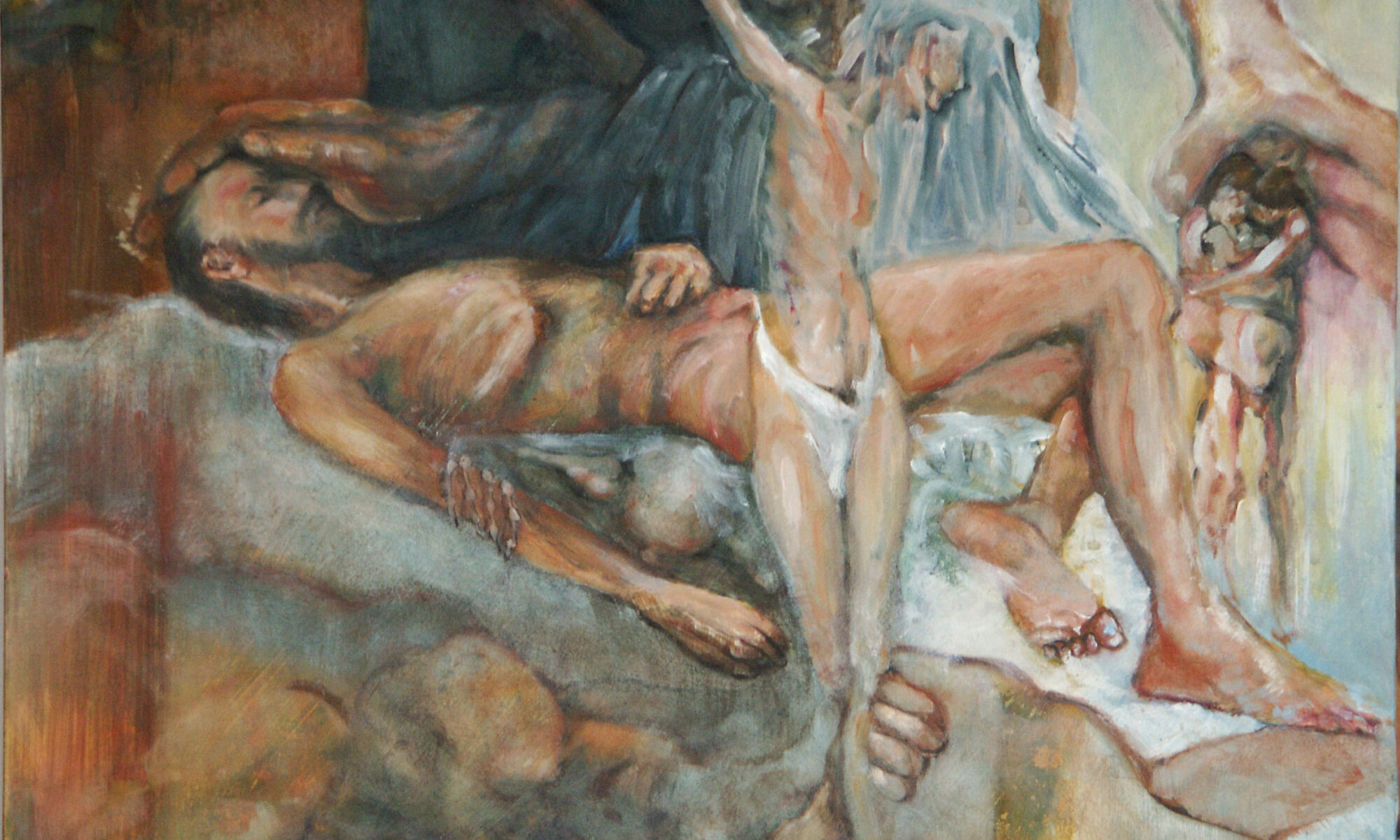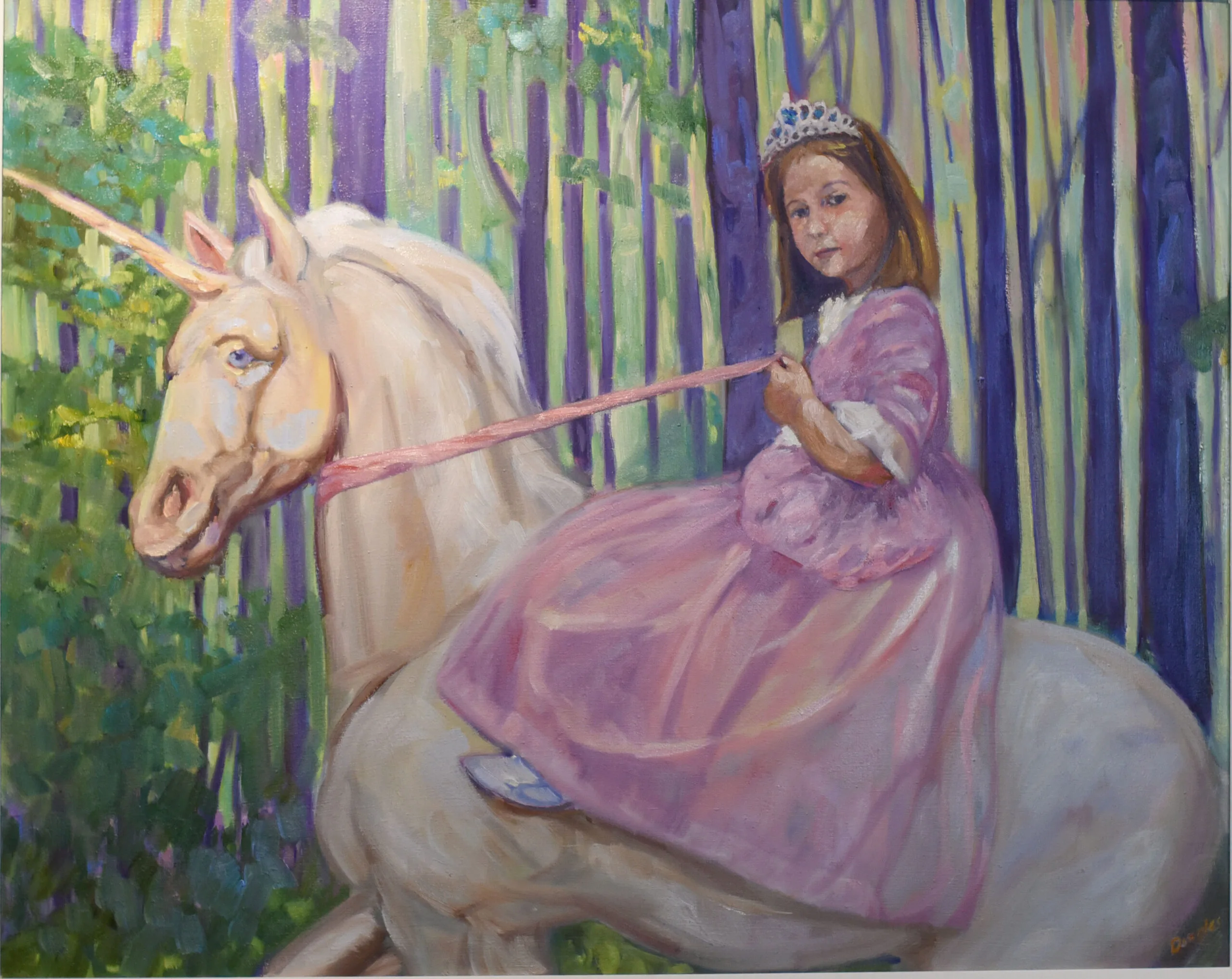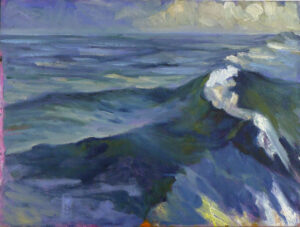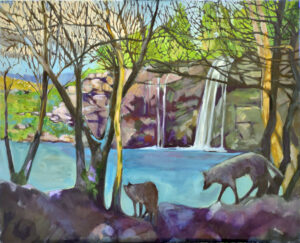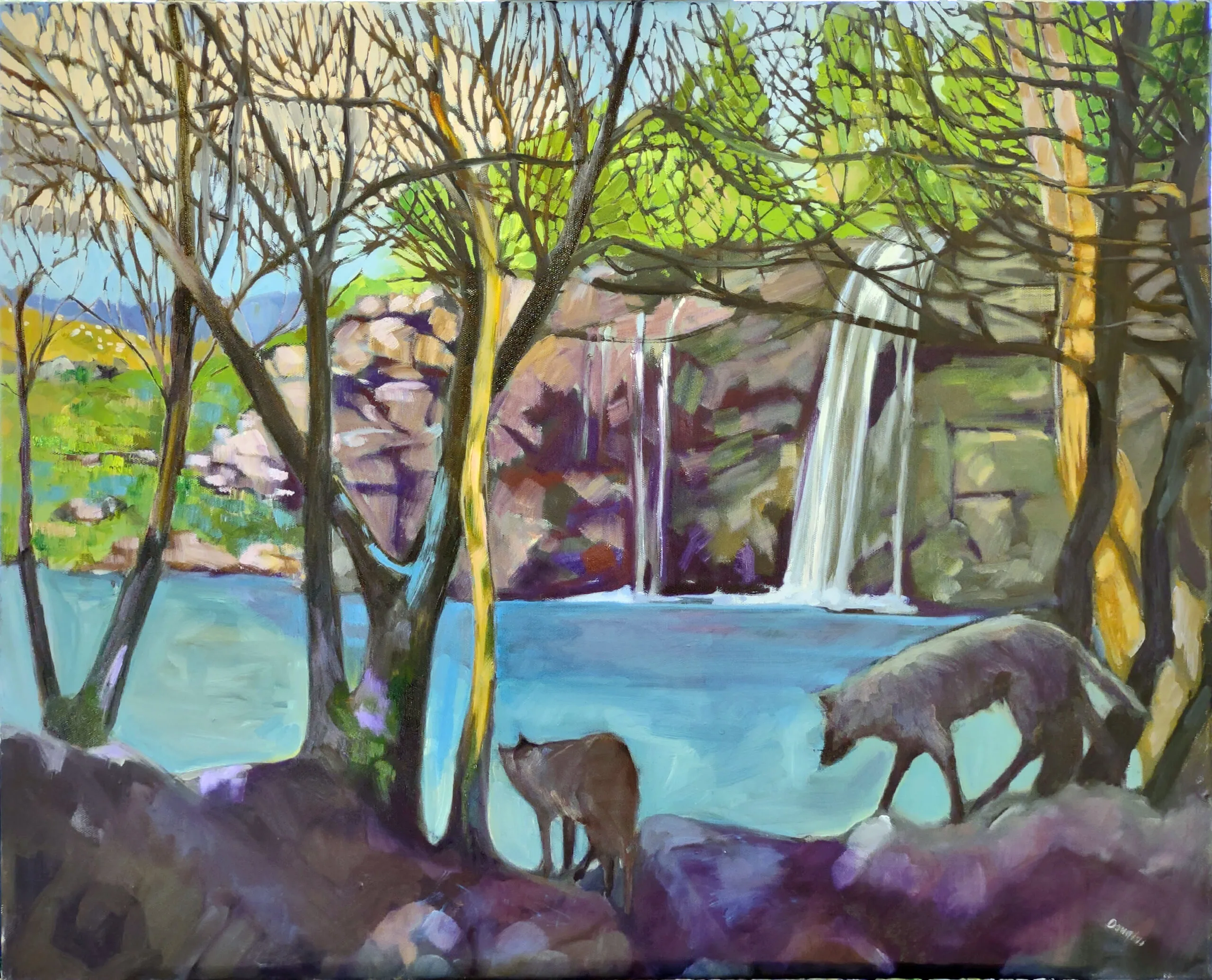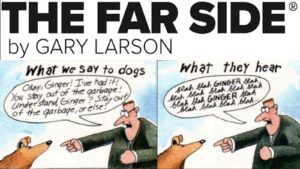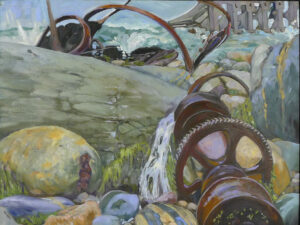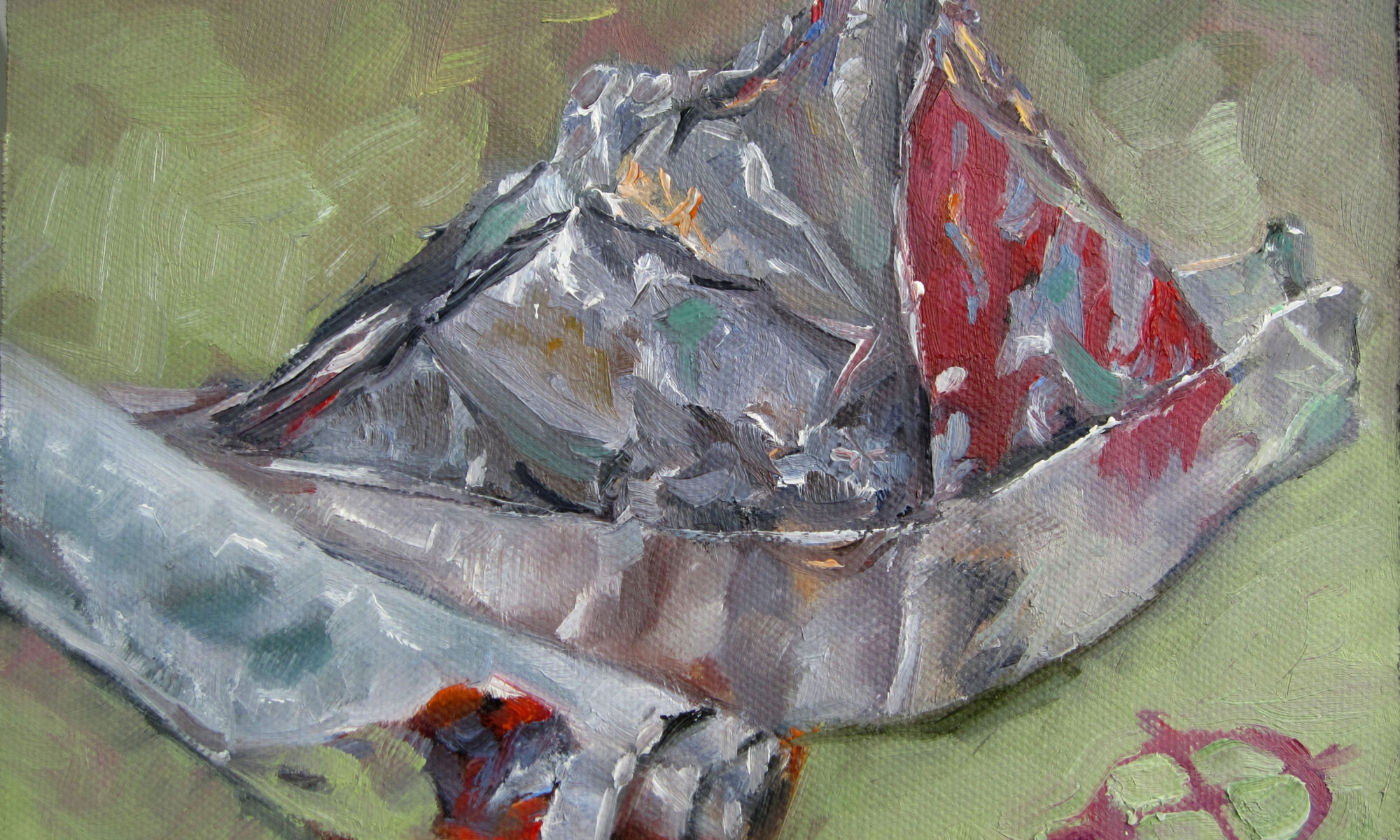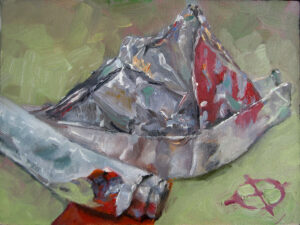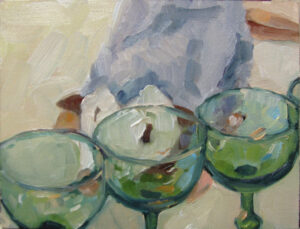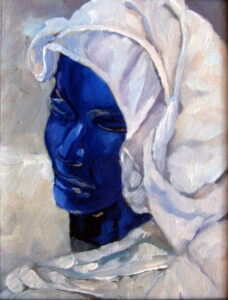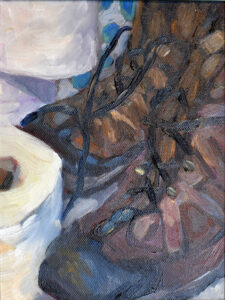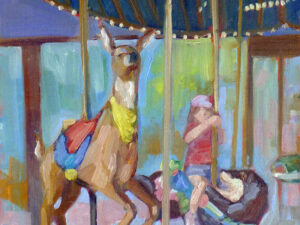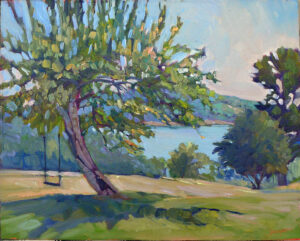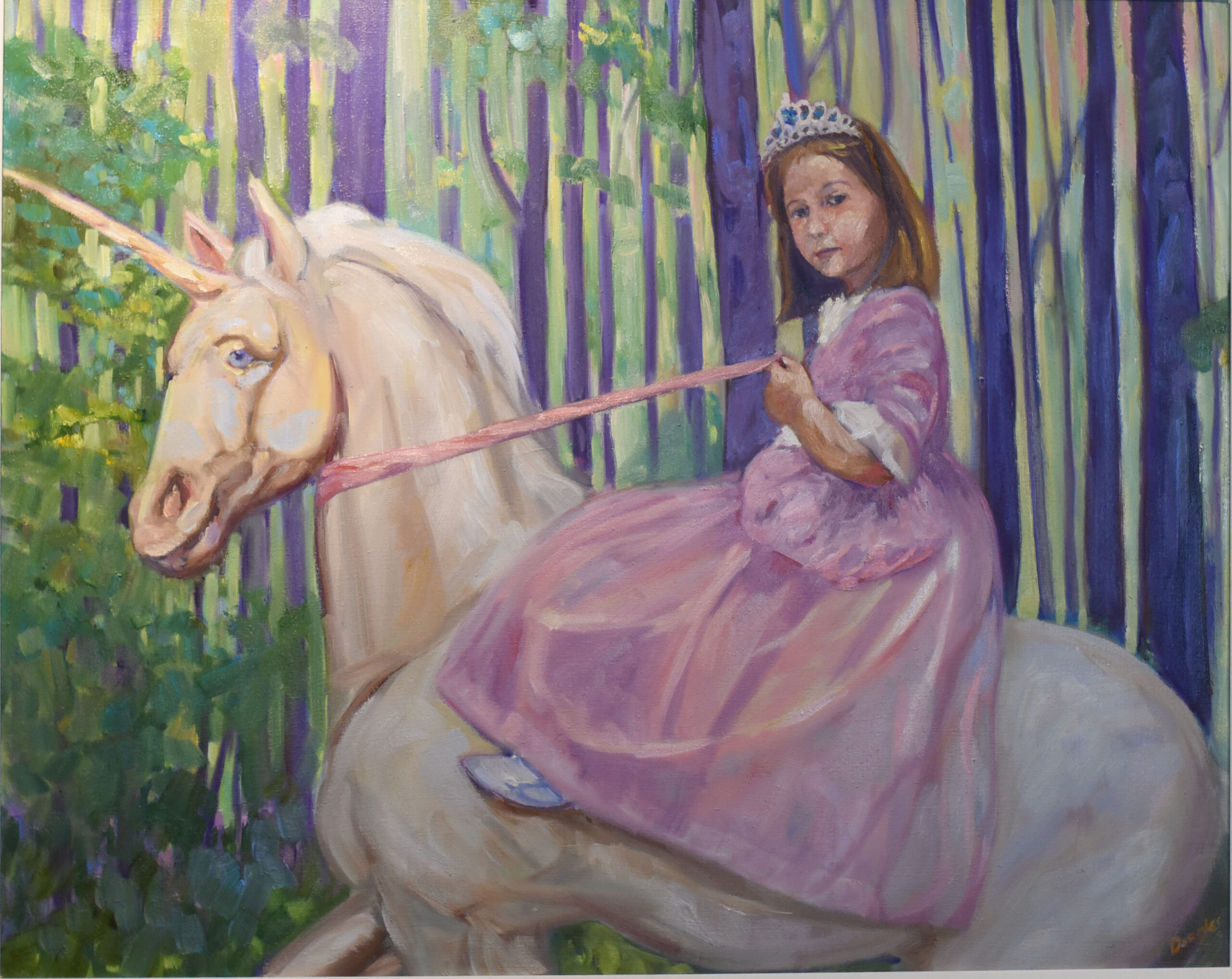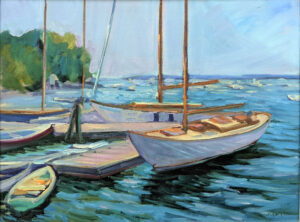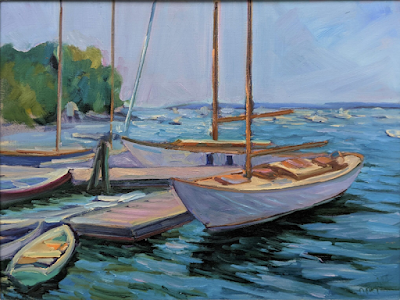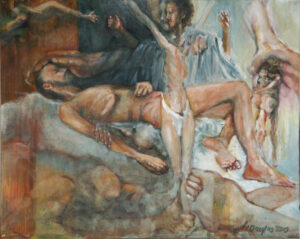
There’s a common misconception that knowing the juror improves your odds for a show. I’ve found the reverse to be true. Knowing the juror usually ends up being a liability, since your friends bend over backwards to avoid the appearance of impropriety. This is a story where knowing someone slightly resulted in bad press.
For those of you who don’t know the story, Lazarus died, and four days later, Jesus went into Lazarus’ tomb and resurrected his friend. This was Jesus’ last miracle before the events of Good Friday and Easter, and prefigured Jesus’ own death and resurrection. I was still contemplating what ‘remission’ meant in my life, so the dark subject appealed.
In my painting, Lazarus is beginning to putrify. Death is gnawing on his arm. Jesus is being dragged down from the cross by demons into hell, and at the same time he is the power of resurrection himself, our Great High Priest. To the far right are Adam and Eve being cast naked into the world, because Christian theology calls Jesus ‘the second Adam’ (it’s complicated). At the top left is a figure representing suffering mankind.
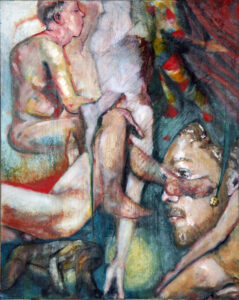
This was before I knew not to apply to shows that were beyond my pay grade, and naivete (as so often happens) paid off. The painting was accepted into a prestigious national show.
Then I received a newspaper review in the mail. My painting was singled out for excoriation. The two comments that rankled most were, “immature use of color,” and “I don’t know what [the curator] was thinking to include this painting.”
What the critic didn’t disclose is that he had a nodding relationship with me (the art world is small, with much overlap). To speculate about his reason for spitefulness is pointless, but he did tremendously jar my confidence. I’ve only shown this painting twice in the 21 intervening years.
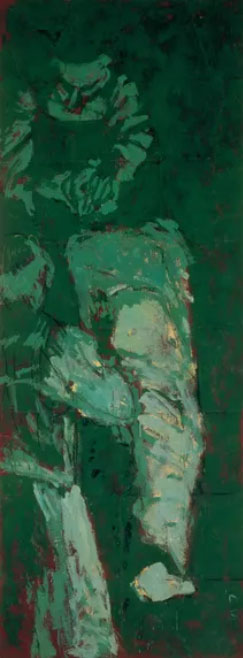
At the time, I I did what any mature person would do: I burst into tears and called my spiritual mentor, who let me cry all over her shoulder and made all the right noises about what a jerk he was. Today, I have far more self-confidence, but bad press is always a downer, whether it comes in the form of rejection, withering comments, or even self-doubt. A friend is an invaluable resource at those times.
As for my use of color, it was an intentional nod to the Renaissance palette, since they were the last great gasp of religious iconography.
Have a thoughtful Good Friday and a blessed Easter, my friends.
Reserve your spot now for a workshop in 2025:
- Advanced Plein Air Painting, Rockport, ME, July 7-11, 2025.
- Sea and Sky at Acadia National Park, August 3-8, 2025.
- Find Your Authentic Voice in Plein Air, Berkshires, MA, August 11-15, 2025.
- Immersive In-Person Fall Workshop, Rockport, ME, October 6-10, 2025.

